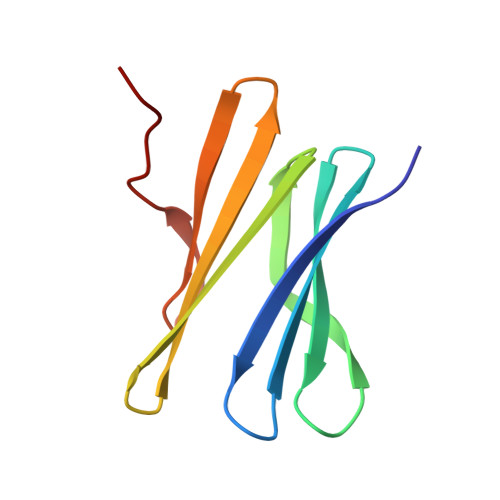Protein Recognition and Assembly by a Phosphocavitand.
Wren, C.P., Flood, R.J., Mockler, N.M., Savko, M., Malinska, M., Shi, Q., Crowley, P.B.(2025) J Am Chem Soc 147: 28107-28116
- PubMed: 40694812
- DOI: https://doi.org/10.1021/jacs.5c08121
- Primary Citation of Related Structures:
9HRU, 9HRV, 9HRW, 9HRX, 9HRY, 9HRZ - PubMed Abstract:
Controlled protein assembly is an enabling technology, in particular, for biomaterials fabrication. Here, we report protein recognition and assembly by a phosphate-containing macrocycle ( pctx ). We show that the C 3 -symmetric phosphocavitand is a versatile receptor for N-terminal residues or arginine but not lysine. Using atomic resolution X-ray diffraction data, we reveal the precise details of N-terminal complexation in the β-propeller protein Ralstonia solanacearum lectin (RSL). In some cocrystal structures, a tetrahedral cluster of the phosphocavitand occupies one end of the β-propeller fold, providing a node for protein assembly. The macrocycle cluster is compatible with different types of precipitants, a broad pH range, and zinc complexation. We demonstrate system control with an arginine-enriched RSL that alters the overall assembly due to selective arginine complexation by pctx . A lysozyme- pctx cocrystal structure also demonstrates arginine complexation by the macrocycle. An alternative macrocycle cluster occurs with an engineered RSL bearing an extended N-terminus. In this structure, involving zinc ligation at the N-terminus, the macrocycle forms trimeric clusters and four such clusters form cage-like substructures within the tetrahedral protein framework. Thus, N-terminal complexation in combination with phosphocavitand self-assembly provides new routes to protein crystal engineering.
- School of Biological and Chemical Sciences, University of Galway, Galway H91 TK33, Ireland.
Organizational Affiliation:


















